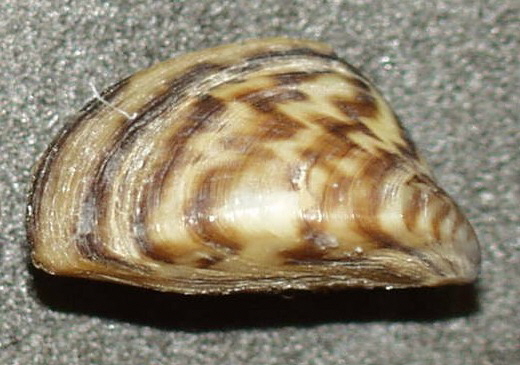When zebra mussels exploded in the Great Lakes region during the early 1990s, fisheries managers in Texas and many other southern states certainly noticed, but most weren’t overly alarmed.
Yes, the alien freshwater mollusks, native to northern Eurasia and introduced to North America through the ballast water of commercial ships, had quickly become a major environmental and economic problem. Able to reproduce at tremendous rates – a single, fingernail-size mussel can produce a million eggs during spawn – and lacking any significant predators, the mussels swarmed northern waters, triggering considerable negative consequences.
But, evidence suggested, the invasive mussels were likely to remain a regional problem. They were confined to the Great Lakes. The mussels couldn’t transport themselves across scores of miles to infect river systems not directly connected to the infected waters. And, even if they escaped to new waters, the mussels’ relatively small native range was cold-water lakes; the mollusks might be able to live in the upper Midwest but almost certainly would wither and perish in the sultry waters of a southern summer.
It hasn’t worked out that way. Zebra mussels have spread at an alarming rate, thanks mostly to human actions. And the mollusks have proven much more tolerant of warm water than just about anyone suspected. They now are found in at least 30 states. By 2009, they had made it to Texas, first taking hold in Lake Texoma on the Texas/Oklahoma border.
Last week, barely seven years later, Texas fisheries officials announced discovery of zebra mussels in three reservoirs, boosting the number of lakes hosting the potentially devastating invasive species to a dozen spread across the Trinity, Red and Brazos river systems.
One of the new reservoirs on the list is Lake Livingston, the 90,000-acre lake on the Trinity River about 80 miles northeast of Houston. Livingston, a hugely popular fishing destination and a primary water source for the fourth-most populous city in the nation, is the southernmost and easternmost Texas waterbody in which zebra mussels have been documented.
“We knew Lake Livingston could be at risk for zebra mussels, but we were hoping they wouldn’t show up,” said Brian Van Zee, Waco-based regional director of Texas Parks and Wildlife Department’s inland fisheries division. “You don’t want to see any new infestation; there can be a lot of negative consequences.”
Some of those consequences are economic. Zebra mussels reproduce so quickly and in such dense concentrations they can carpet lake bottoms and anything under the water. They attach themselves to water management and transportation infrastructure such gates and pump parts and, especially, intake screens and pipes. The concentrations are so thick they clog and close these crucial systems.
This damage to water infrastructure systems has cost billions nationwide. It has cost hundreds of millions in Texas.
See here and here for some background. The main defense against zebra mussels has been trying to slow their march across the landscape, but that hasn’t been much of a success, and recent flooding appears to have helped them spread out to new locations. I hope someone’s thinking of a way to try and control their population, because we’re beginning to run out of places where they haven’t yet invaded.

